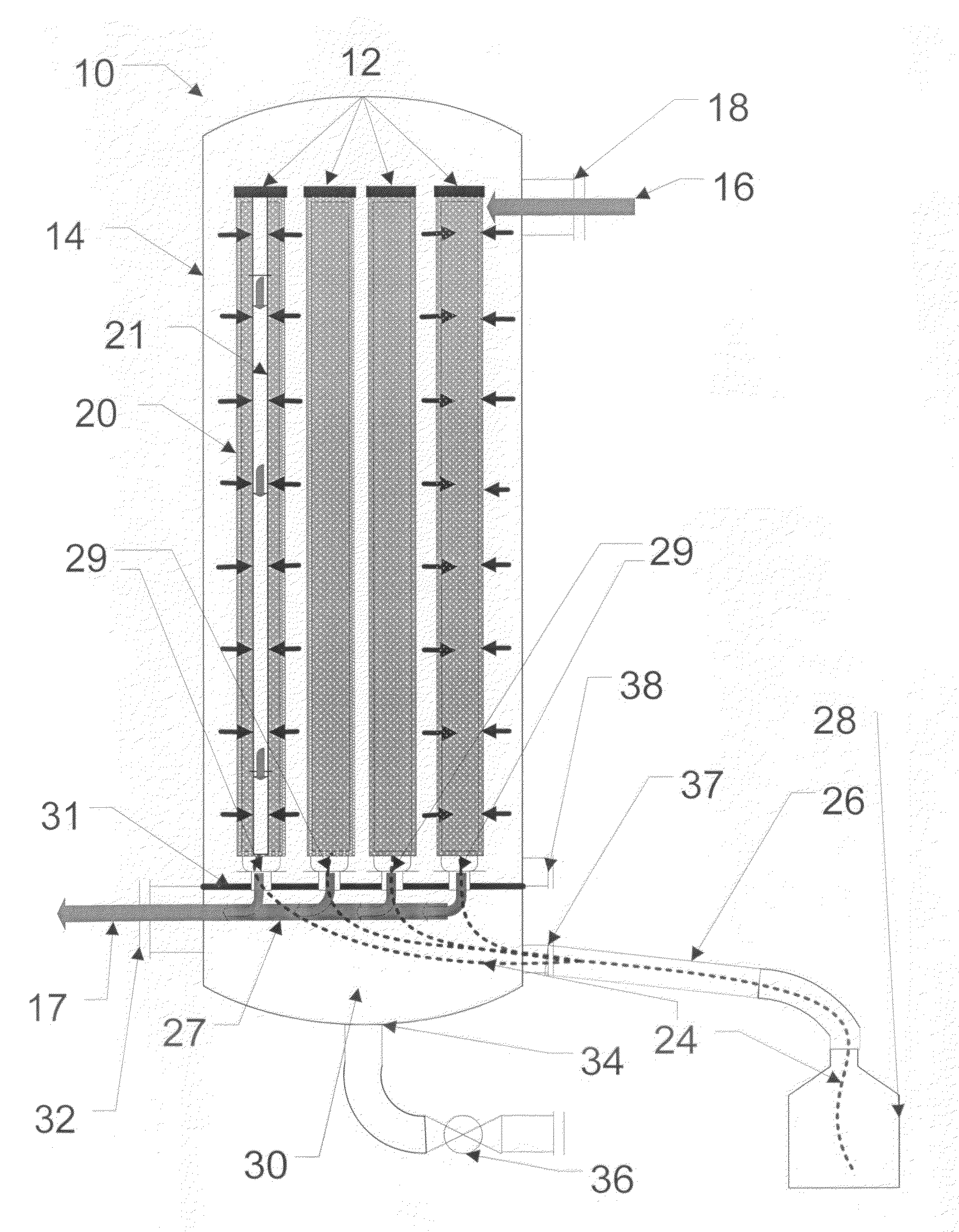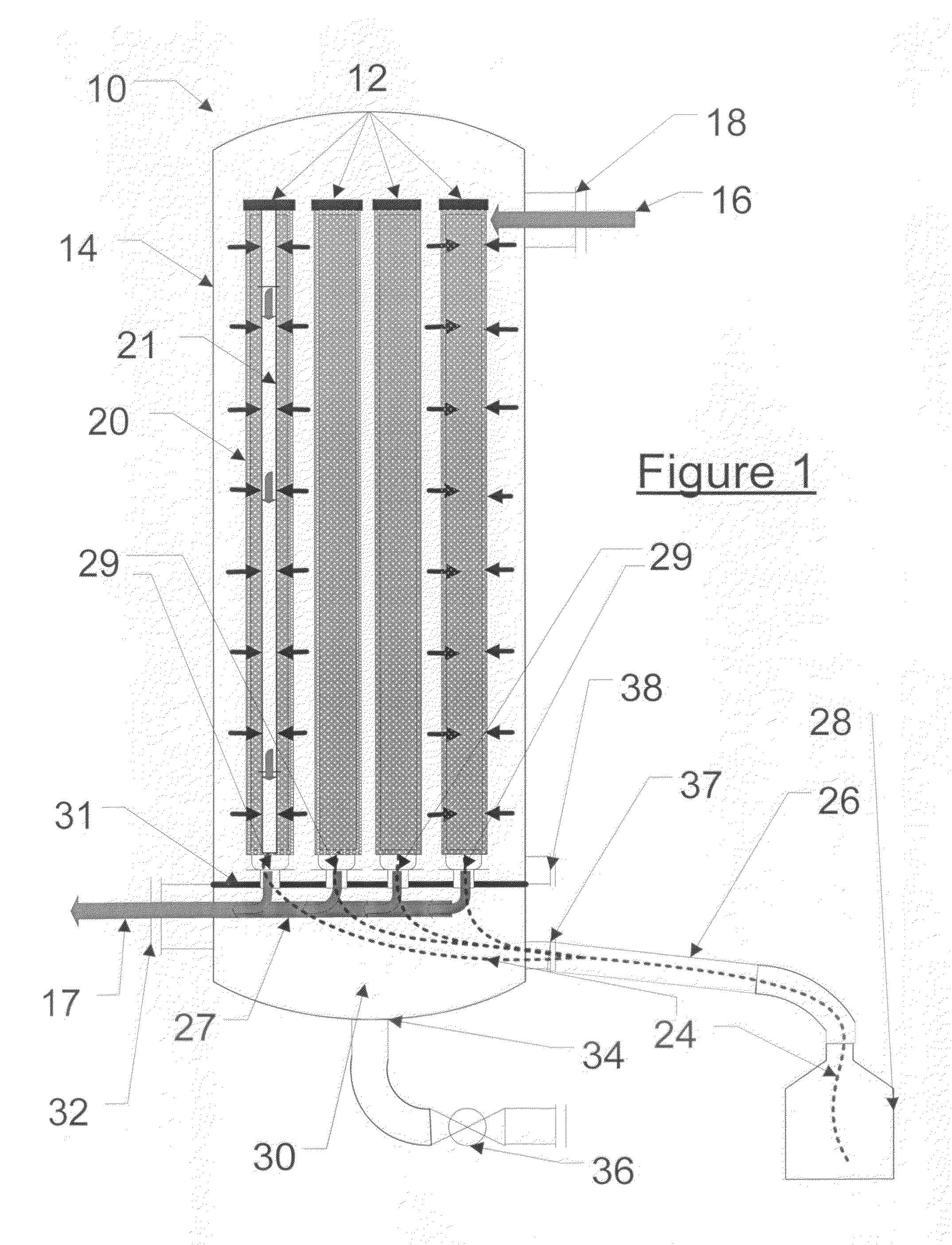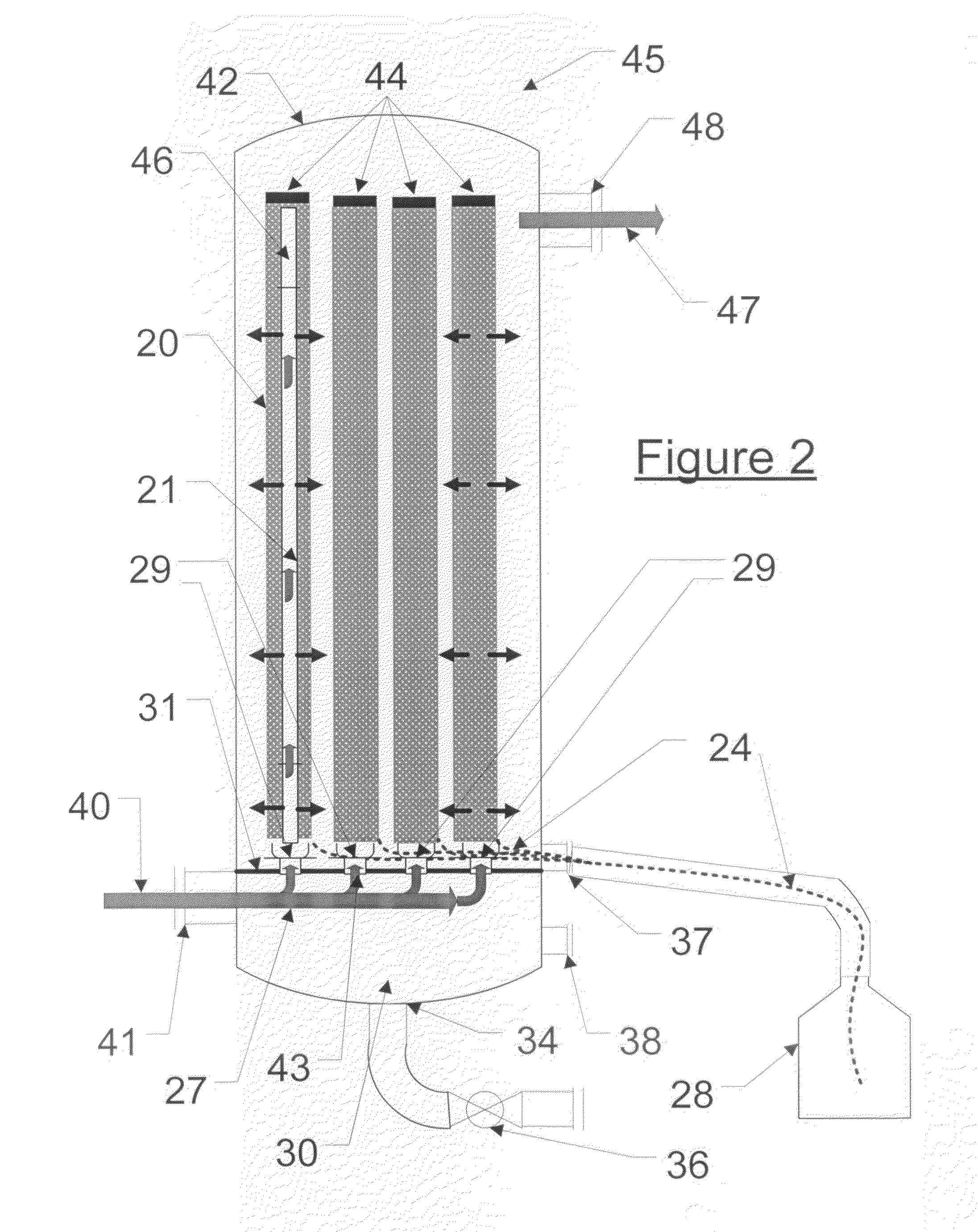Process and system for separating finely aerosolized elemental mercury from gaseous streams
a technology of aerosolized elemental mercury and gaseous stream, which is applied in the direction of liquid degasification, separation process, auxillary pretreatment, etc., can solve the problem of gold surface peeling or undercutting over time and become a serious problem
- Summary
- Abstract
- Description
- Claims
- Application Information
AI Technical Summary
Benefits of technology
Problems solved by technology
Method used
Image
Examples
Embodiment Construction
[0026]Referring to the schematic block diagram of FIG. 1, a filtering system 10 is shown which utilizes metal capillary (“MC”) filters 12 in accordance with the invention to remove and collect finely aerosolized mercury. In system 10 four identical MC filters 12 are mounted in a tank 14 to function in parallel in treating a gas flow stream 16 provided to tank 14 via inlet 18. The actual number of MC filters 12 can be greater or smaller than the exemplary four shown. The gas flow in tank 14 enters into each of the MC filters by passing through the capillary surface presented by the metallic braid 20 which in the MC filter is wound upon a stainless steel core or tube 21, the walls of which, as seen in FIG. 4, are perforated by openings 23. The braided materials used, as discussed above, are of the type that has been well known in the prior art as “solder wicks” because of their previous use to remove solder connections. Such solder wicks are made of metal strands braided to form narro...
PUM
| Property | Measurement | Unit |
|---|---|---|
| Capillary wave | aaaaa | aaaaa |
| Flow rate | aaaaa | aaaaa |
| Surface | aaaaa | aaaaa |
Abstract
Description
Claims
Application Information
 Login to View More
Login to View More - R&D
- Intellectual Property
- Life Sciences
- Materials
- Tech Scout
- Unparalleled Data Quality
- Higher Quality Content
- 60% Fewer Hallucinations
Browse by: Latest US Patents, China's latest patents, Technical Efficacy Thesaurus, Application Domain, Technology Topic, Popular Technical Reports.
© 2025 PatSnap. All rights reserved.Legal|Privacy policy|Modern Slavery Act Transparency Statement|Sitemap|About US| Contact US: help@patsnap.com



